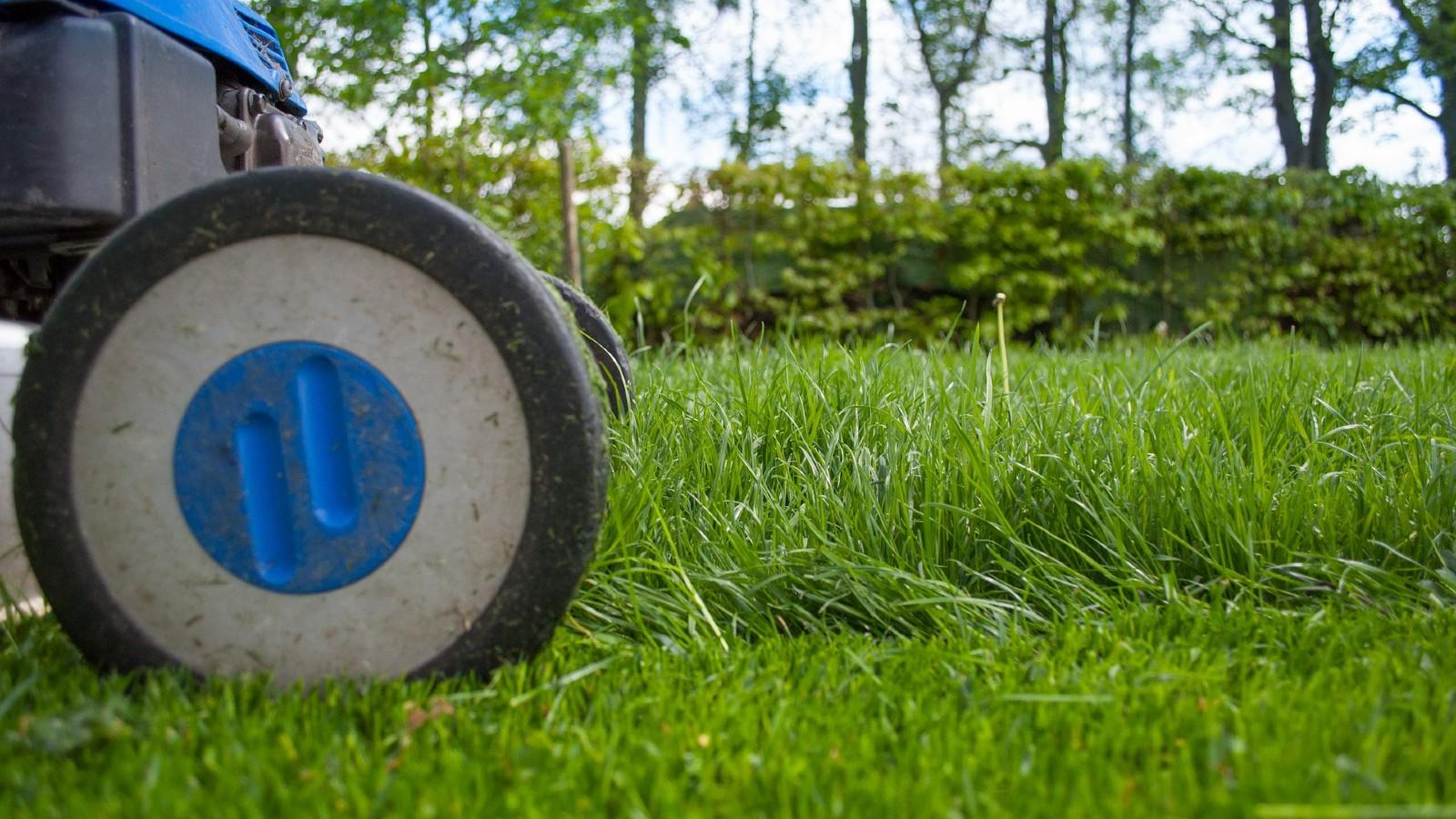Home lawns and the idea of what a home lawn should look like varies greatly. There are homeowners who dream of that perfectly green, weed-free lawn (although the trend is toward a lower input lawn and lawn alternatives), and then there are others who are perfectly fine with clover and other weeds growing in their low maintenance landscapes. Our lawn care advice is based on University research that concentrates on cultural practices, including proper timing and amount of fertilizer, to produce a healthy, family, and earth-friendly lawn.
How to have a healthy lawn in Maryland
Summary of Care for Maryland Home Lawns
- Perform a soil test every three years and before a lawn renovation project. Lawn Maintenance Calendar for Maryland Home Lawns
- Late summer through early fall is the best time to perform lawn renovation and overseeding. This includes aeration and sowing grass seed.
- Turf-type tall fescue is the recommended type of grass for sunny lawns in Maryland. Fine fescues are used on low-maintenance sites and for areas that receive less than 4 hours of direct sunlight. Refer to (PDF) TT-77 Recommended Turfgrass Cultivars for Certified Sod and Professional Seed Mixtures.
- Set your mower height at 3 - 4 inches. Mow more frequently when your grass is actively growing (spring and fall) and less frequently when your lawn is dormant during the hottest, driest part of the summer. Do not remove more than 1/3rd of the grass blade at each cutting.
- Apply lawn fertilizer in the fall and maintain your lawn according to Lawn Maintenance Calendar for Maryland Lawns and the University of Maryland Extension lawn fertilizer schedule. The optional fertilizer applications listed are not necessary for lawns older than 8-10 years because older lawns require less nitrogen. Also, sweep any fertilizer that lands on sidewalks or driveways back onto grassy areas.
- Do not bag grassclippings but allow them to naturally decompose on your lawn. This practice contributes about 25% of the nitrogen your lawn needs for the year.
- A thick, dense lawn is the best defense against weeds. Hand pull or spot treat broadleaf weeds with a liquid broadleaf weed herbicide. Proper fertilization and mowing height, in addition to overseeding contribute to a thick, healthy lawn.
- Established tall fescue lawns generally do not need to be watered. They will go dormant during the hot, dry part of the summer and green up again when cooler temperatures return and rainfall increases. If watering is necessary, such as with a new lawn, water for a longer period of time but less frequently to encourage a deeper root system. Frequent shallow watering encourages a weak, drought intolerant root system.
- Look into lawn alternatives for a more natural, more sustainable landscape. Or, consider planting groundcovers in shady areas and around trees where grass does not grow well.
Still have a question? Contact us at Ask Extension
 English
English العربية
العربية Български
Български 简体中文
简体中文 繁體中文
繁體中文 Hrvatski
Hrvatski Čeština
Čeština Dansk
Dansk Nederlands
Nederlands Suomi
Suomi Français
Français Deutsch
Deutsch Ελληνικά
Ελληνικά हिन्दी
हिन्दी Italiano
Italiano 日本語
日本語 한국어
한국어 Norsk bokmål
Norsk bokmål Polski
Polski Português
Português Română
Română Русский
Русский Español
Español Svenska
Svenska Català
Català Filipino
Filipino עִבְרִית
עִבְרִית Bahasa Indonesia
Bahasa Indonesia Latviešu valoda
Latviešu valoda Lietuvių kalba
Lietuvių kalba Српски језик
Српски језик Slovenčina
Slovenčina Slovenščina
Slovenščina Українська
Українська Tiếng Việt
Tiếng Việt Shqip
Shqip Eesti
Eesti Galego
Galego Magyar
Magyar Maltese
Maltese ไทย
ไทย Türkçe
Türkçe فارسی
فارسی Afrikaans
Afrikaans Bahasa Melayu
Bahasa Melayu Kiswahili
Kiswahili Gaeilge
Gaeilge Cymraeg
Cymraeg Беларуская мова
Беларуская мова Íslenska
Íslenska Македонски јазик
Македонски јазик יידיש
יידיש Հայերեն
Հայերեն Azərbaycan dili
Azərbaycan dili Euskara
Euskara ქართული
ქართული Kreyol ayisyen
Kreyol ayisyen اردو
اردو বাংলা
বাংলা Bosanski
Bosanski Cebuano
Cebuano Esperanto
Esperanto ગુજરાતી
ગુજરાતી Harshen Hausa
Harshen Hausa Hmong
Hmong Igbo
Igbo Basa Jawa
Basa Jawa ಕನ್ನಡ
ಕನ್ನಡ ភាសាខ្មែរ
ភាសាខ្មែរ ພາສາລາວ
ພາສາລາວ Latin
Latin Te Reo Māori
Te Reo Māori मराठी
मराठी Монгол
Монгол नेपाली
नेपाली ਪੰਜਾਬੀ
ਪੰਜਾਬੀ Afsoomaali
Afsoomaali தமிழ்
தமிழ் తెలుగు
తెలుగు Yorùbá
Yorùbá Zulu
Zulu ဗမာစာ
ဗမာစာ Chichewa
Chichewa Қазақ тілі
Қазақ тілі Malagasy
Malagasy മലയാളം
മലയാളം සිංහල
සිංහල Sesotho
Sesotho Basa Sunda
Basa Sunda Тоҷикӣ
Тоҷикӣ O‘zbekcha
O‘zbekcha አማርኛ
አማርኛ Corsu
Corsu Ōlelo Hawaiʻi
Ōlelo Hawaiʻi كوردی
كوردی Кыргызча
Кыргызча Lëtzebuergesch
Lëtzebuergesch پښتو
پښتو Samoan
Samoan Gàidhlig
Gàidhlig Shona
Shona سنڌي
سنڌي Frysk
Frysk isiXhosa
isiXhosa